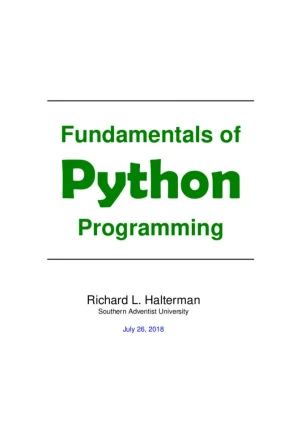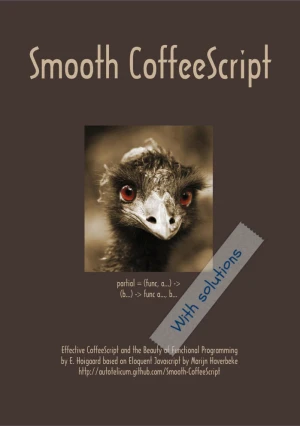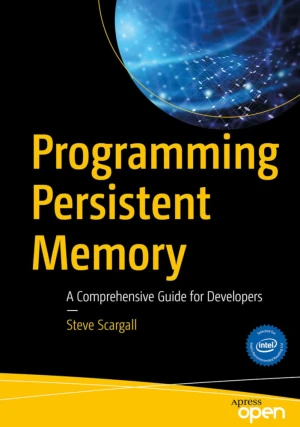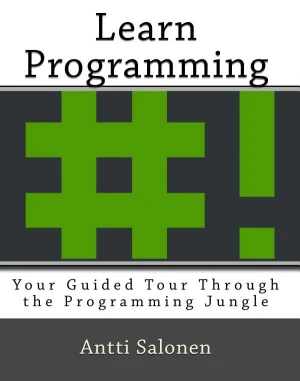Fundamentals of C++ Programming
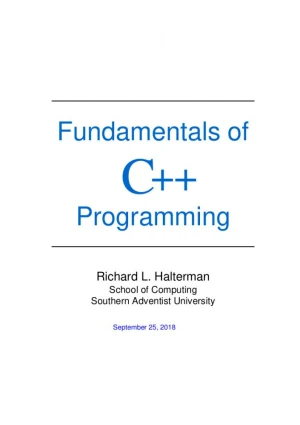
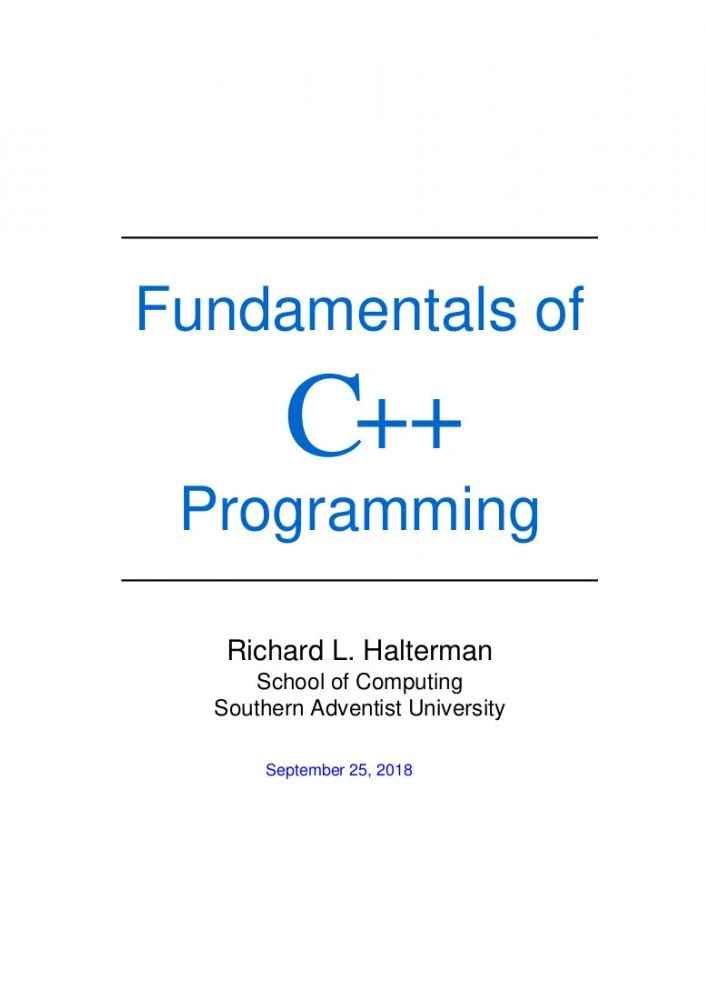
Book Details
| Author | Richard L. Halterman |
| Publisher | Southern Adventist University |
| Published | 2018 |
| Edition | 1st |
| Paperback | 766 pages |
| Language | English |
| License | Creative Commons Attribution-NonCommercial-ShareAlike |
Book Description
Bjarne Stroustrup of AT&T Bell Labs created C++ in the mid 1980s. C++ is an extension of the programming language C, a product of AT&T Bell Labs from the early 1970s. C was developed to write the Unix operating system, and C is widely used for systems-level software and embedded systems development.
C++ initially provided object-oriented programming features (see Chapter 13 and Chapter 14) and later added generic programming capabilities. C++ 's close relationship to C allows C++ programs to utilize a large collection of code developed in C.
C++ is widely used in industry for commercial software development. It is an industrial strength programming language used for developing complex systems in business, science, and engineering. Examples of software written in C++ include Microsoft Windows 8, Microsoft Office, macOS, and Adobe Creative Suite.
In order to meet the needs of commercial software development and accomplish all that it does, C++ itself is complex. While experienced programmers can accomplish great things with C++ , beginners sometimes have a difficult time with it. Professional software developers enjoy the flexible design options that C++ permits, but beginners need more structure and fewer options so they can master simpler concepts before moving on to more complex ones.
This book does not attempt to cover all the facets of the C++ programming language. Experienced programmers should look elsewhere for books that cover C++ in much more detail. The focus here is on introducing programming techniques and developing good habits. To that end, our approach avoids some of the more esoteric features of C++ and concentrates on the programming basics that transfer directly to other imperative programming languages such as Java, C#, and Python. We stick with the basics and explore more advanced features of C++ only when necessary to handle the problem at hand.
This book is available under a Creative Commons Attribution-NonCommercial-ShareAlike license (CC BY-NC-SA), which means that you are free to copy, distribute, and modify it, as long as you credit the original author, don't use it for commercial purposes, and share any adaptations under the same license.
If you enjoyed the book and would like to support the author, you can purchase a printed copy (hardcover or paperback) from official retailers.
Download and Read Links
Share this Book
[localhost]# find . -name "*Similar_Books*"
Fundamentals of Computer Programming with C#
This open book aims to provide novice programmers solid foundation of basic knowledge regardless of the programming language. This book covers the fundamentals of programming that have not changed significantly over the last 10 years. Educational content was developed by an authoritative author team led by Svetlin Nakov from the Software University
Fundamentals of Python Programming
Guido van Rossum created the Python programming language in the late 1980s. In contrast to other popular languages such as C, C++ , Java, and C#, Python strives to provide a simple but powerful syntax. Python is used for software development at companies and organizations such as Google, Yahoo, Facebook, CERN, Industrial Light and Magic, and NASA.
Smooth CoffeeScript
CoffeeScript is a lucid evolution of JavaScript created by Jeremy Ashke-nas. Apart from the major change in explaining Coffee-Script instead of JavaScript, numerous other changes have been made andsections have been added, edited or removed. Everything that is expressed in this book is therefore solely the responsi-bility of the editor. In the sens
Programming Persistent Memory
Beginning and experienced programmers will use this comprehensive guide to persistent memory programming. You will understand how persistent memory brings together several new software/hardware requirements, and offers great promise for better performance and faster application startup times - a huge leap forward in byte-addressable capacity compar
Fundamentals of Azure, 2nd Edition
Microsoft Azure is Microsoft's cloud computing platform, providing a wide variety of services you can use without purchasing and provisioning your own hardware. Azure enables the rapid development of solutions and provides the resources to accomplish tasks that may not be feasible in an on-premises environment. Azure's compute, storage, network, an
Learn Programming
This book is aimed at readers who are interested in software development but have very little to no prior experience. The book focuses on teaching the core principles around software development. It uses several technologies to this goal (e.g. C, Python, JavaScript, HTML, etc.) but is not a book about the technologies themselves. The reader will le


